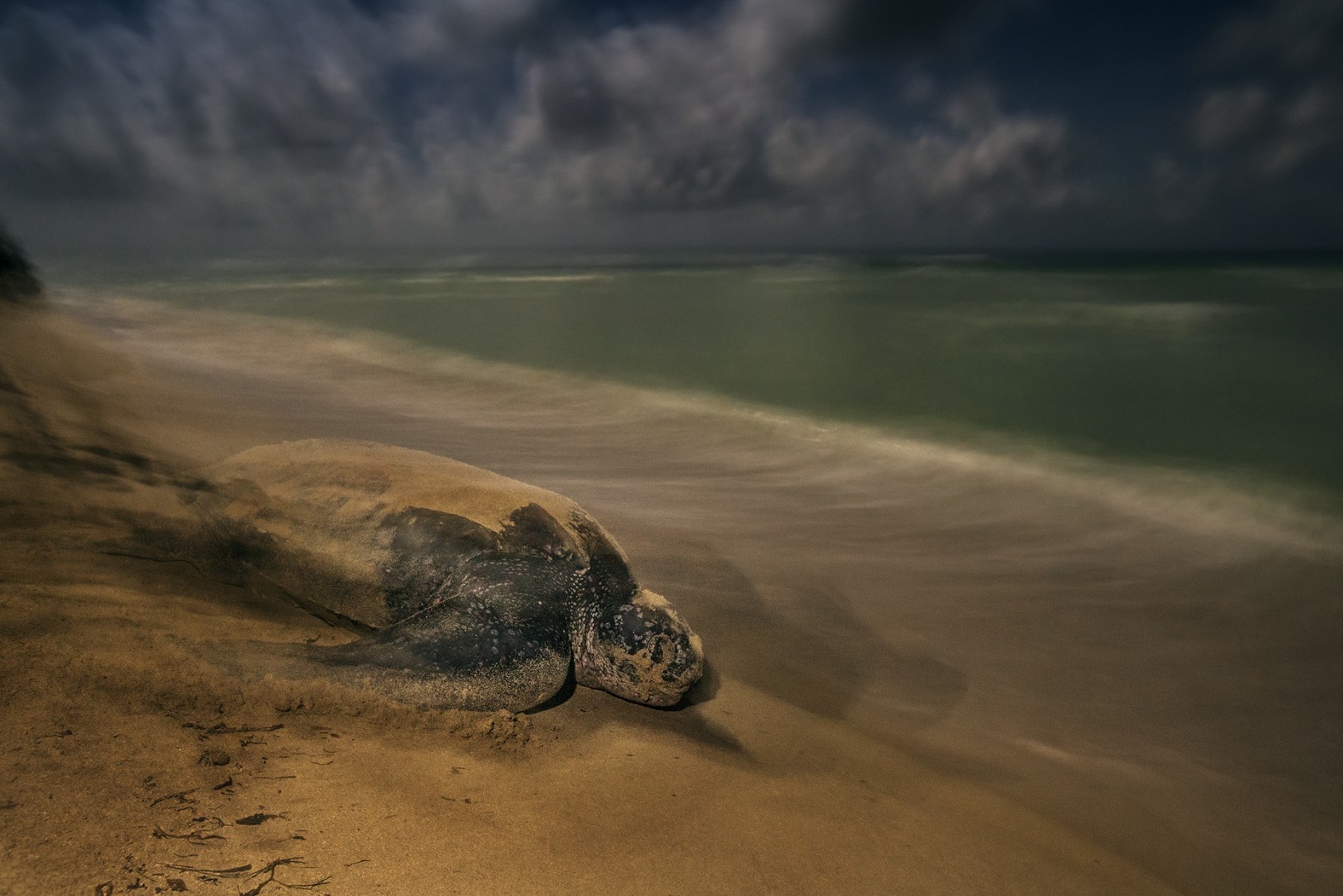
The Winners Of The NHM Wildlife Photography Awards
The ancient ritual
Brian Skerry, USA
Winner 2017, Behaviour: Amphibians and Reptiles
Nikon D5 + 17–35mm f2.8 lens at 24mm; 10 sec at f8; ISO 1600; Nikon flash at 1/64th power + tungsten gel; Nikon remote release.
Like generations before her, the leatherback turtle shifts her considerable weight with her outsized, strong front flippers and moves steadily back to the ocean. Leatherbacks are the largest, deepest-diving and widest-ranging sea turtles, the only survivors of an evolutionary lineage that diverged from other sea turtles 100–150 million years ago. Much of their lives are spent at sea, shrouded in mystery. When mature, their leathery shells now averaging 1.6 metres (5 feet 3 inches) long, females return to the shores where they themselves hatched to lay their own eggs. Sandy Point National Wildlife Refuge on St Croix, in the US Virgin Islands, provides critical nesting habitat, successfully managed for decades. Elsewhere, leatherbacks are not so lucky, threatened primarily by fisheries bycatch as well as factors including human consumption, coastal development and climate change. The females each lay about 100 eggs in nests dug deep in the sand. Some 60 days later, the hatchlings emerge, their sex influenced by incubation temperatures (hotter nests produce more females). Nesting turtles are not seen every night at Sandy Point, and were often too far away for Brian to reach. When after two weeks he got the encounter he wanted – under clear skies, with no distant city lights – he hand-held a long exposure under the full moon, artfully evoking a primordial atmosphere in this timeless scene.